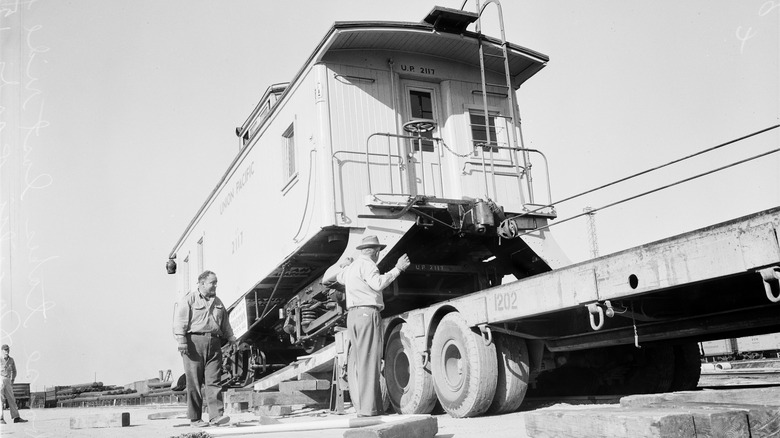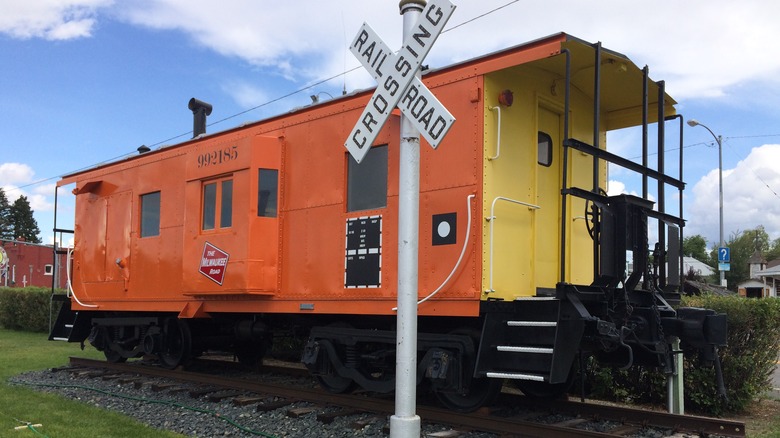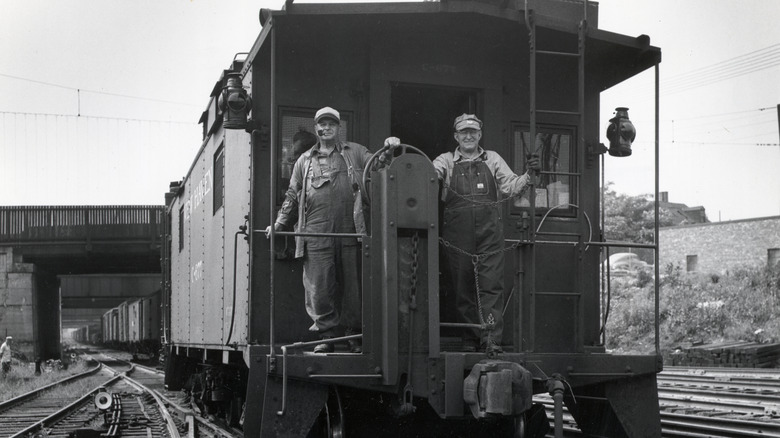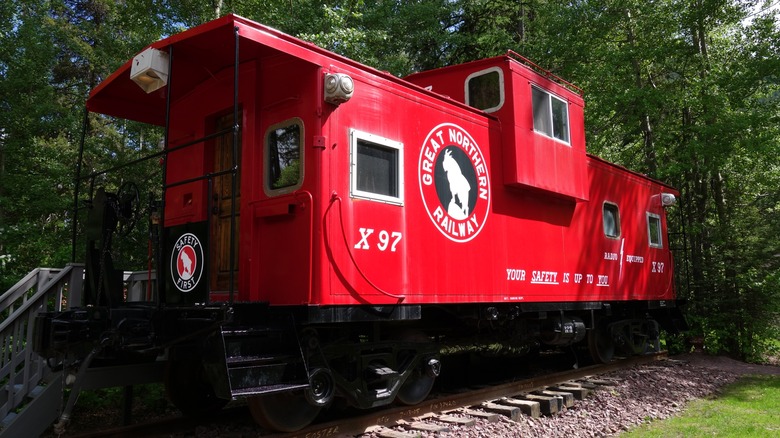The Real Reason You Never See Cabooses On Trains Anymore
The glory days of America's railway system are well behind her. According to The Washington Post, the past century has seen U.S. passenger rail go from the envy of the world to the worst among peer nations, largely on account of poor regulatory decisions made during the New Deal era. Freight rail has remained a success by comparison, but its customers have had issues with its service for years. American rail's reputation is poor enough that China has used it to talk up its own high-speed lines and technological superiority.
There have been efforts in recent years to revive America's trains. They're a climate-friendly travel option compared to cars and planes, and for all the comments made at Amtrak's expense, many of its customers like it. Trains also retain a sheen of romance in the American mind, and not without reason — the rail systems put down after the Civil War played a large part in moving the nation's mentality from a group of states to a unified country. But whatever the fate of U.S. railways and the efforts to improve them, there's one famous piece of their legacy you won't see, and haven't seen on any operational train for decades: the caboose. It might be the most recognizable part of a train after the engine for many people, but familiarity couldn't save cabooses from the march of technological progress and harsh economic realities.
What was the caboose used for?
The caboose grew out of an improvised solution to a pressing need in the early days of the railway. Train engines were too crowded for conductors to be able to work comfortably, and with freight trains picking up and dropping off valuable cargo throughout their lines, there was a lot to keep track of. To have a usable workspace, conductors set up offices in older cars. Eventually, these evolved into the caboose as we know it, which functioned not only as a workspace but as living quarters and a lookout post for the crew.
The latter function was vital to a properly functioning train. Conductors needed to be able to see that everything on the train was working properly. If anything broke down, or if the train needed to come to a stop, the conductor would crawl into the top level of the caboose, the cupola, and supervise as crews manually applied the brakes to each train car.
A final use for cabooses was advertising. They have a reputation for being bright red cars at the end of a train, typically painted this color for safety. But cabooses came in many hues — rail companies often painted the caboose to reflect their signature colors and logos, or to match the rest of the train cars.
They disappeared because of technology
The caboose wasn't just a convenience for the conductor and crew — until the 1980s, it was a mandated part of trains in the United States and Canada. As a place to survey the line for damage, it was an essential safety feature. But their necessity only lasted as long as technology didn't offer an alternative.
Two innovations helped make cabooses obsolete as a piece of railway safety. Monitoring systems installed on the side of train tracks detected any defects in car wheels or dragging pieces of freight or equipment, which meant that conductors didn't need the caboose to watch for such issues. And the end-of-train device (ETD) took over the monitoring of a train's air-brake system. The ETD need only be fitted on the last car in a line to mind the brakes and relay any issues to the locomotive, which can transmit back an order to stop the train if needed.
As for being a resting place for cast and crew, rail companies started paying for motel rooms by the '80s, and conductors had less need for space when their paperwork went to computers. Some older workers argued for keeping cabooses as a safety feature, or just out of sentimentality, but the writing was on the wall. That cabooses lasted until the '80s in North America was unusual — Europe began phasing them out of its railways in the 1940s.
Some train lovers (and workers) want the caboose back
When technological advancements in the 1980s first suggested that train cabooses were redundant, some workers fought to keep them as a useful safety measure. Those arguments were not persuasive, especially not after the cost of maintaining cabooses ($381 million per year, per the Lewiston Morning Tribune) were factored in. But if there are no grounds to have a caboose on a train based on utility or finance, some train workers — and train enthusiasts — argue that there's a sentimental case for them.
Kevin Keefe, former editor of Trains magazine, conceded that cabooses weren't needed anymore. But he told the Chicago Tribune in 1995, "The caboose is just one more romantic element of the railroad that's disappeared." He said that fellow train fans found advancements like the ETD cold and impersonal compared to the light from a manned caboose at the end of the line. And in 2020, Alan Clark argued in the Herald Chronicle that "nonessentials" like the caboose added an underappreciated color to life that technological advancement too often bleeds out of society. He suggested that even an unmanned caboose, a purely cosmetic addition to the backs of trains, would be welcome by railroad enthusiasts.



